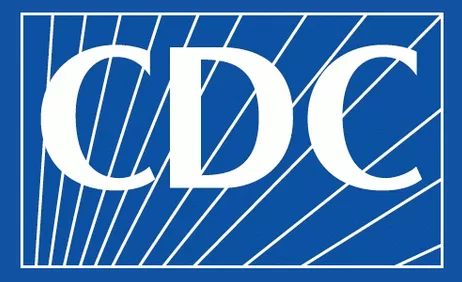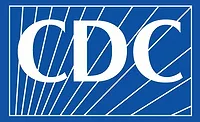CDC Releases Interim Guidance for Restaurants and Bars Amid COVID-19 Pandemic

The U.S. Centers for Disease Control and Prevention (CDC)'s guidance provides considerations for businesses in the foodservice industry (e.g., restaurants and bars) on ways to maintain healthy business operations and a safe and healthy work environment for employees, while reducing the risk of COVID-19 spread for both employees and customers. Employers should follow applicable Occupational Safety and Health Administration and CDC guidance for businesses to plan and respond to COVID-19. All decisions about implementing these recommendations should be made in collaboration with local health officials and other State and local authorities who can help assess the current level of mitigation needed based on levels of COVID-19 community transmission and the capacities of the local public health and healthcare systems. CDC is releasing this interim guidance, laid out in a series of three steps, to inform a gradual scale up of activities towards pre-COVID-19 operating practices. The scope and nature of community mitigation suggested decreases from Step 1 to Step 3. Some amount of community mitigation is necessary across all steps until a vaccine or therapeutic drug becomes widely available.
Scaling Up Operations
In all Steps:
- Establish and maintain communication with local and State authorities to determine current mitigation levels in your community.
- Consider assigning workers at high risk for severe illness duties that minimize their contact with customers and other employees (e.g., man-aging inventory rather than working as a cashier, managing administrative needs through telework).
- Provide employees from higher transmission areas (earlier Step areas) telework and other options as feasible to eliminate travel to workplaces in lower transmission (later Step) areas and vice versa.
- Step 1: Bars remain closed and restaurant service should remain limited to drive-through, curbside take out, or delivery with strict social distancing.
- Step 2: Bars may open with limited capacity; restaurants may open dining rooms with limited seating capacity that allows for social distancing.
- Step 3: Bars may open with increased standing room occupancy that allows for social distancing; restaurants may operate while maintaining social distancing.
Safety Actions
Promote healthy hygiene practices (Steps 1-3)
- Enforce hand washing, covering coughs and sneezes, and use of a cloth face coverings by employees when near other employees and customers.
- Ensure adequate supplies to support healthy hygiene practices for both employees and customers including soap, hand sanitizer with at least 60 percent alcohol (on every table, if supplies allow), paper towels, and tissues.
- Post signs on how to stop the spread of COVID-19 properly wash hands, promote everyday protective measures, and properly wear a face covering.
Intensify Cleaning, Disinfection, and Ventilation (Steps 1-3)
- Clean and disinfect frequently touched surfaces (for example, door handles, work stations, cash registers) at least daily and shared objects (for example, payment terminals, tables, countertops/bars, 54 receipt trays, condiment holders) between use. Use products that meet EPA’s criteria for use against SARS-CoV-2 and that are appropriate for the surface. Prior to wiping the surface, allow the disinfectant to sit for the necessary contact time recommended by the manufacturer. Train staff on proper cleaning procedures to ensure safe and correct application of disinfectants.
- Make available individual disinfectant wipes in bathrooms.
- Wash, rinse, and sanitize food contact surfaces, food preparation surfaces, and beverage equipment after use.
- Avoid using or sharing items such as menus, condiments, and any other food. Instead, use disposable or digital menus, single-serving condiments, and no-touch trash cans and doors.
- Use touchless payment options as much as possible, when available. Ask customers and employees to exchange cash or card payments by placing on a receipt tray or on the counter rather than by hand. Clean and disinfect any pens, counters, or hard surfaces between use or customer.
- Use disposable foodservice items (utensils, dishes). If disposable items are not feasible, ensure that all non-disposable foodservice items are handled with gloves and washed with dish soap and hot water or in a dishwasher. Employees should wash their hands after removing their gloves or after directly handling used foodservice items
- Use gloves when removing garbage bags or handling and disposing of trash and wash hands afterwards
- Avoid using food and beverage containers or utensils brought in by customers.
- Ensure that ventilation systems operate properly and increase circulation of outdoor air as much as possible such as by opening windows and doors. Do not open windows and doors if doing so poses a safety risk to employees, children, or customers. • Take steps to ensure that all water systems and features (for example, drinking fountains, decorative fountains) are safe to use after a prolonged facility shutdown to minimize the risk of Legionnaires’ disease and other diseases associated with water.
Promote Social Distancing
Step 1
- Limit service to drive-through, delivery, or curbside pick-up options only.
- Provide physical guides, such as tape on floors or sidewalks to ensure that customers remain at least six feet apart in lines or ask customers to wait in their cars or away from the establishment while waiting to pick up food. Post signs to inform customers of food pickup protocols.
- Consider installing physical barriers, such as sneeze guards and partitions at cash registers, or other food pickup areas where maintaining physical distance of six feet is difficult.
- Restrict the number of employees in shared spaces, including kitchens, break rooms, and offices to maintain at least a six-foot distance between people.
- Rotate or stagger shifts to limit the number of employees in the workplace at the same time.
Step 2
- Provide drive-through, delivery, or curbside pick-up options and prioritize outdoor seating as much as possible.
- Reduce occupancy and limit the size of parties dining in together to sizes that ensure that all customer parties remain at least six feet apart (e.g., all tables and bar stools six feet apart, marking tables/stools that are not for use) in order to protect staff and other guests.
- Provide physical guides, such as tape on floors or sidewalks and signage on walls to ensure that customers remain at least six feet apart in lines or waiting for seating.
- Ask customers to wait in their cars or away from the establishment while waiting to be seated. If possible, use phone app technology to alert patrons when their table is ready to avoid touching and use of “buzzers.”
- Consider options for dine-in customers to order ahead of time to limit the amount of time spent in the establishment.
- Avoid offering any self-serve food or drink options, such as buffets, salad bars, and drink stations. • Install physical barriers, such as sneeze guards and partitions at cash registers, bars, host stands, and other areas where maintaining physical distance of six feet is difficult.
- Limit the number of employees in shared spaces, including kitchens, break rooms, and offices to maintain at least a six-foot distance between people.
Step 3
- Provide drive-through, delivery, or curbside pick-up options and prioritize outdoor seating as much as possible.
- Consider reducing occupancy and limiting the size of parties dining in together to sizes that ensure that all customer parties remain at least six feet apart (e.g., all tables and bar stools six feet apart, marking tables/stools that are not for use) in order to protect staff and other guests.
- Provide physical guides, such as tape on floors or sidewalks and signage on walls, to ensure that customers remain at least six feet apart in lines or waiting for seating.
- If possible, use phone app technology to alert patrons when their table is ready to avoid touching and use of “buzzers.”
- Consider options for dine-in customers to order ahead of time to limit the amount of time spent in the establishment.
- Avoid offering any self-serve food or drink options, such as buffets, salad bars, and drink stations.
- Install physical barriers, such as sneeze guards and partitions at cash registers, bars, host stands, and other areas where maintaining physical distance of six feet is difficult.
Train All Staff (Steps 1-3)
- Train all employees in the above safety actions while maintaining social distancing and use of face coverings during training.
Monitoring and Preparing
Checking for signs and symptoms (Steps 1-3)
- Consider conducting daily health checks (e.g., temperature and symptom screening) of employees.
- If implementing health checks, conduct them safely and respectfully, and in accordance with any applicable privacy laws and regulations. Confidentiality should be respected. Employers may use examples of screening methods in CDC’s General Business FAQs as a guide.
- Encourage staff who are sick to stay at home.
Plan for when an employee becomes sick (Steps 1-3)
- Employees with symptoms of COVID-19 (fever, cough, or shortness of breath) at work should immediately be sent to their home.
- Inform those who have had close contact to a person diagnosed with COVID-19 to stay home and self-monitor for symptoms, and to follow CDC guidance if symptoms develop. If a person does not have symptoms follow appropriate CDC guidance for home isolation.
- Establish procedures for safely transporting anyone sick to their home or to a healthcare facility.
- Notify local health officials, staff, and customers (if possible) immediately of any possible case of COVID-19 while maintaining confidentiality consistent with the Americans with Disabilities Act and other applicable federal and state privacy laws.
- Close off areas used by a sick person and do not sure them until after cleaning and disinfection. Wait 24 hours before cleaning and disinfecting. If it is not possible to wait 24 hours, wait as long as possible. Ensure safe and correct application of disinfectants and keep disinfectant products away from children. • Advise sick staff members not to return until they have met CDC’s criteria to discontinue home isolation.
Maintain healthy operations (Steps 1-3)
- Implement flexible sick leave and other flexible policies and practices, such as telework, if feasible.
- Monitor absenteeism of employees and create a roster of trained back-up staff.
- Designate a staff person to be responsible for responding to COVID-19 concerns. Employees should know who this person is and how to contact them.
- Create and test communication systems for employees for self-reporting and notification of exposures and closures.
- Support coping and resilience among employees.
Closing
Steps 1-3
- Check State and local health department notices about transmission in the area daily and adjust operations accordingly. • Be prepared to consider closing for a few days if there is a case of COVID-19 in the establishment and for longer if cases increase in the local area.
Looking for quick answers on food safety topics?
Try Ask FSM, our new smart AI search tool.
Ask FSM →








